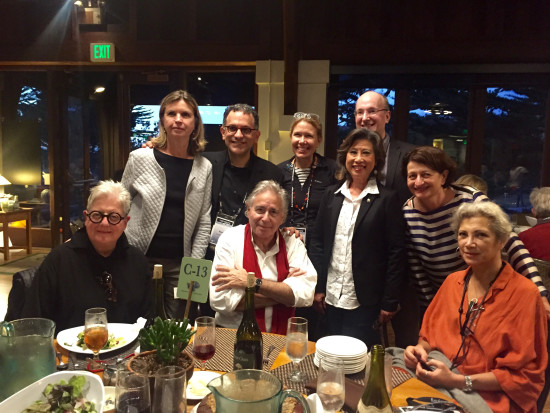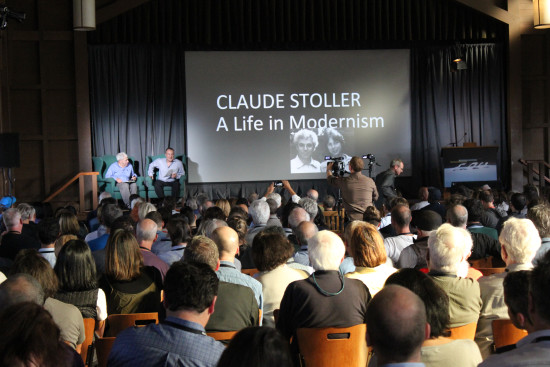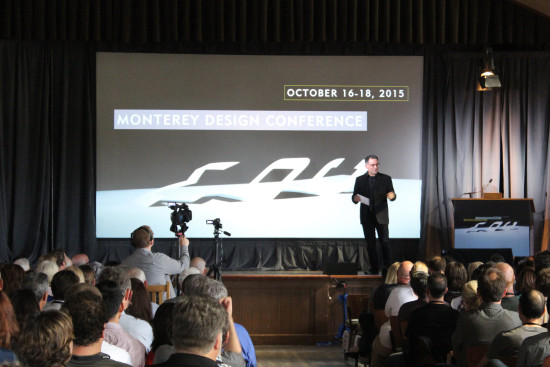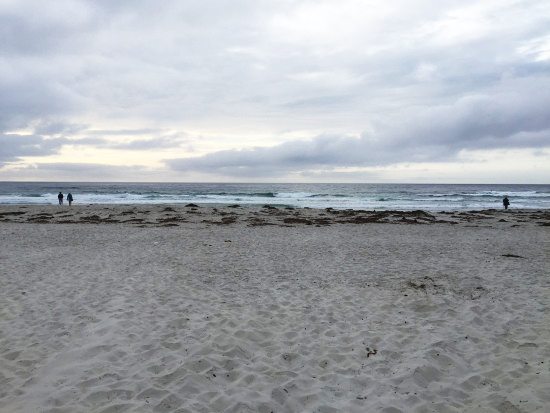Note: This piece appeared in The Architect’s Newspaper blog on Wednesday, October 28, 2015.
This year’s Monterey Design Conference could have been titled the “Monterey Design Short Video Clip Festival.” For as long as I can remember, most of the presentations at the conference have followed the same formula: show slides of recent work and explain them. But now most of the speakers are trying to tell a more nuanced story, informed by our mobile-app/social-media/you-are-never-offline age. Sometimes it worked, sometimes it didn’t. I checked in with attendees to get their impressions.
Architect Clive Wilkinson was the first speaker. Some hardcore architects didn’t like the idea of an interiors presentation opening the event. But given the amount of interiors work that technology has generated, I thought it made sense. But Clive’s text slides didn’t fit the image slides.
I loved the lecture that architect Rand Elliot gave because he linked growing up in Oklahoma to the work he does there, showing how the cars, gas, and big skies of his home state influence his approach to place. Some folks I talked to were snobbish about his presentation, but I thought an Eamesian sense of hospitality pervaded his entire presentation, including a broadsheet of his poetry that he gave to everybody. Attendee and architect George Bradley said that it was his favorite lecture: “His demeanor, his work, ethos, and pursuit for catching light are inspiring. I actually got goosebumps about architecture all over again. He also had the best video, and I wish his was the only video we saw over the weekend.”
Merrill Elam of Mack Scogin Merrill Elam Architects seemed to have more videos than anybody else. About half the people I spoke to loved her lecture and mentioned how it revealed her process. The other half was left unimpressed. As Mallory Cusenbery of Ross Drulis Cusenbery told me, “I think Merrill Elam should get an award in the category, ‘Best Presentation That Nobody Understood.’” Video is here to stay, but it was hard to see what scenes from the film Apocalypse Now had to with anything.
Most folks that I chatted with agreed that the stars of the show were Spanish architect Carme Pinós and Japan’s Junya Ishigami. Pinós wandered all over the stage, gesturing and ending almost every sentence with “No?” As designer Addison Strong said, “And Carme Pinós….ah well, I have a huge crush on her! I found myself hanging on her every word and image. Her plan sketches become something ‘other’ as they morph into three dimensions and get extruded first into models and then buildings. You get the feeling she is constantly exploring, even when the project is under construction.”

Speakers and friends gather at dinner: (seated, L-R) Merrill Elam, AIA; Bernard Tschumi, FAIA; Carme Pinós; (standing, L-R) Architectural Record Editor, Cathleen McGuigan; MDC Emcee, Reed Kroloff; AIA National Strategic Council Member Julia Donaho, AIA; AIA National President, Elizabeth Chu Richter, FAIA; AIA National Young Architects Forum Vice Chair, Josh Flowers, AIA; MDC Organizing Committee Member Anne Fougeron, FAIA. Photo courtesy of AIACC.
Ishigami was less daring in his presentation style, but his work stunned the crowd. Architect Cary Bernstein mentioned him and Pinós as the two standouts, as did others. “Junya Ishigami’s near-fantastical structures perfectly complemented Carme’s tectonic approach,” Bernstein said. Strong added, “His work was more than a little odd, but each project represented a true investigation of something that was of personal interest to him that he hoped would also have meaning for the users. I found him incredibly optimistic, and we can never have enough of that in architecture.”
Speaking of optimism, I always find the “Emerging Talents” session of the conference worth attending. Everybody I talked to agreed that architect Casper Mork-Ulnes and Alvin Huang of Synthesis Design + Architecture were highlights. Mork-Ulnes had a clear message that linked his Norwegian roots and his experience in the West. Huang and his firm embrace all kinds of design exploration. As Strong said, “I particularly liked the work of Casper Mork-Ulnes on the first day and Alvin Huang on the last….they represented polar opposites—the analog vs. digital processes of design that demonstrate that either process is valid when done with care.”
Every year the conference presents a “tribal elder.” As he often has in years past, architect and historian Pierluigi Serraino introduced the sage. This year, the elder was Claude Stoller. Serraino, who could be Dick Cavett, Italian and California Modern Division, must have known he would be unable to keep Stoller on track, so he began the “conversation” with a brief summary of the work and its significance. Later Michelle Huber, a principal at Studio Bondy Architecture, told me that this session was her favorite. “I felt like I was witnessing modern architectural history before my eyes. “

Claude Stoller, FAIA, and Pierluigi Serraino, AIA, discuss Stoller’s illustrious career. Photo courtesy of AIACC.
When I asked folks about why they came, the most repeated words were “inspiration” and “camaraderie.” People told of connecting with old friends from work or school and meeting architects they have long admired. The presentations that resonate the most tell a fresh, authentic, and coherent story—around a campfire, real or imagined. A little bit of wine doesn’t hurt either. Hint: bring your own.

